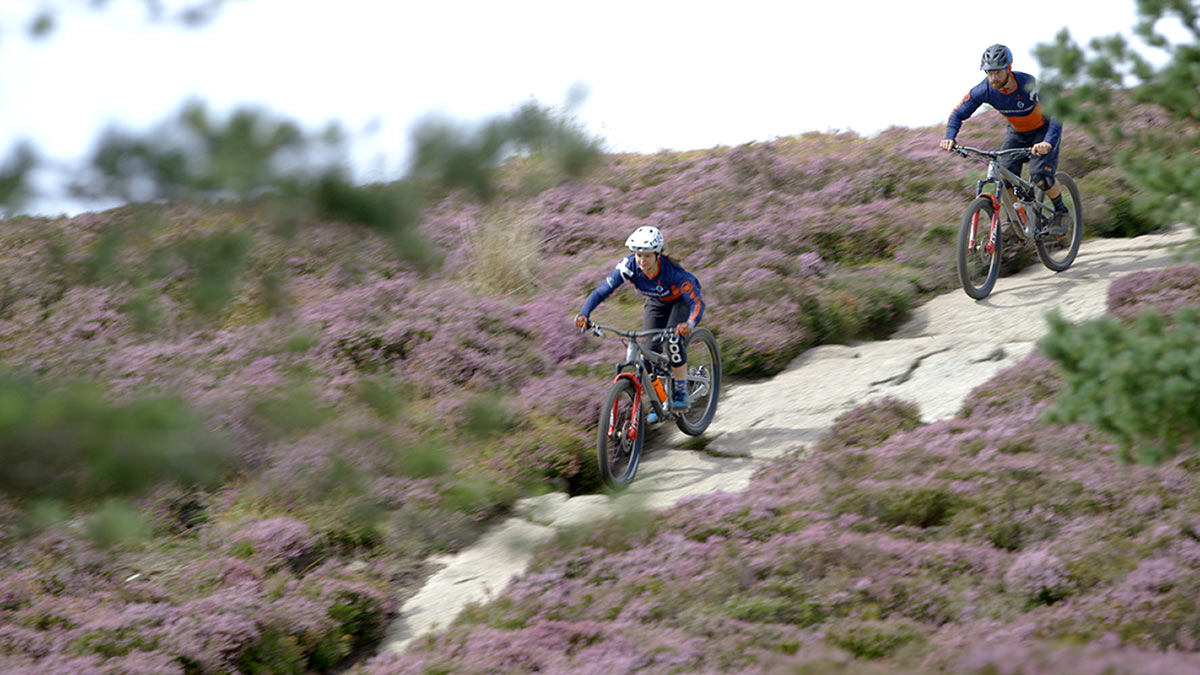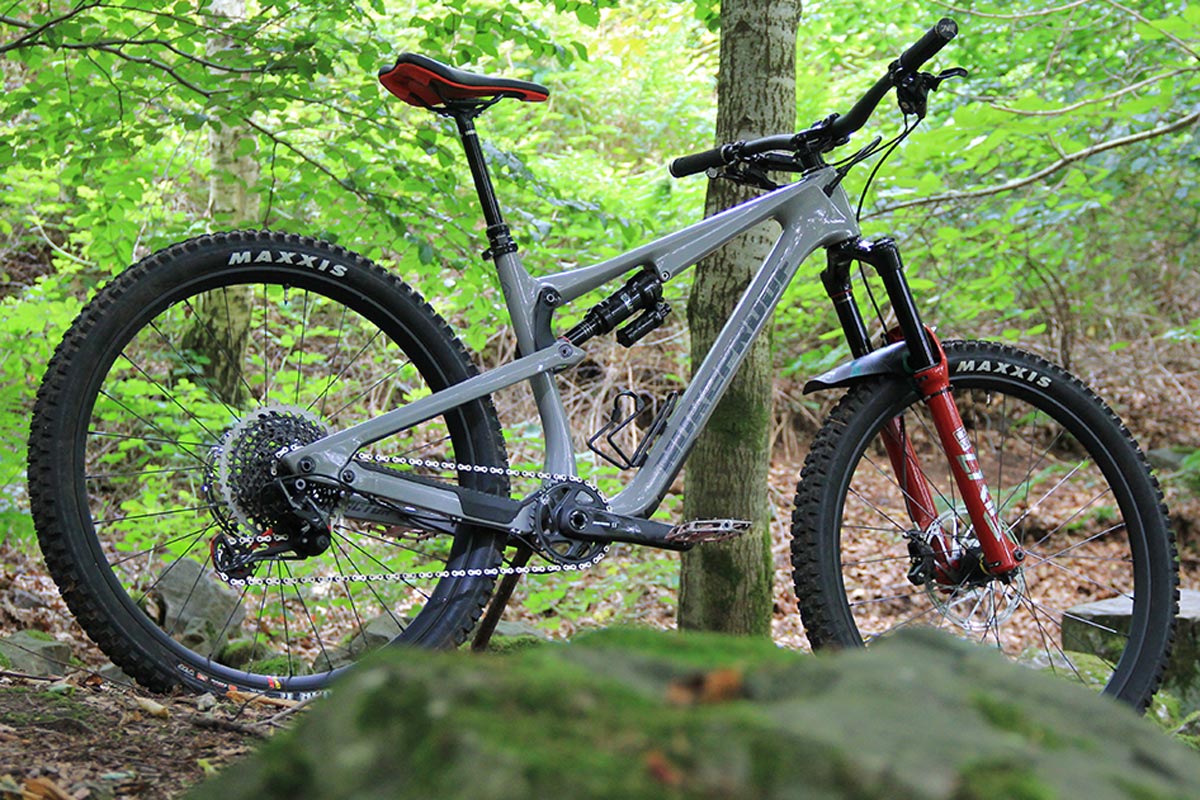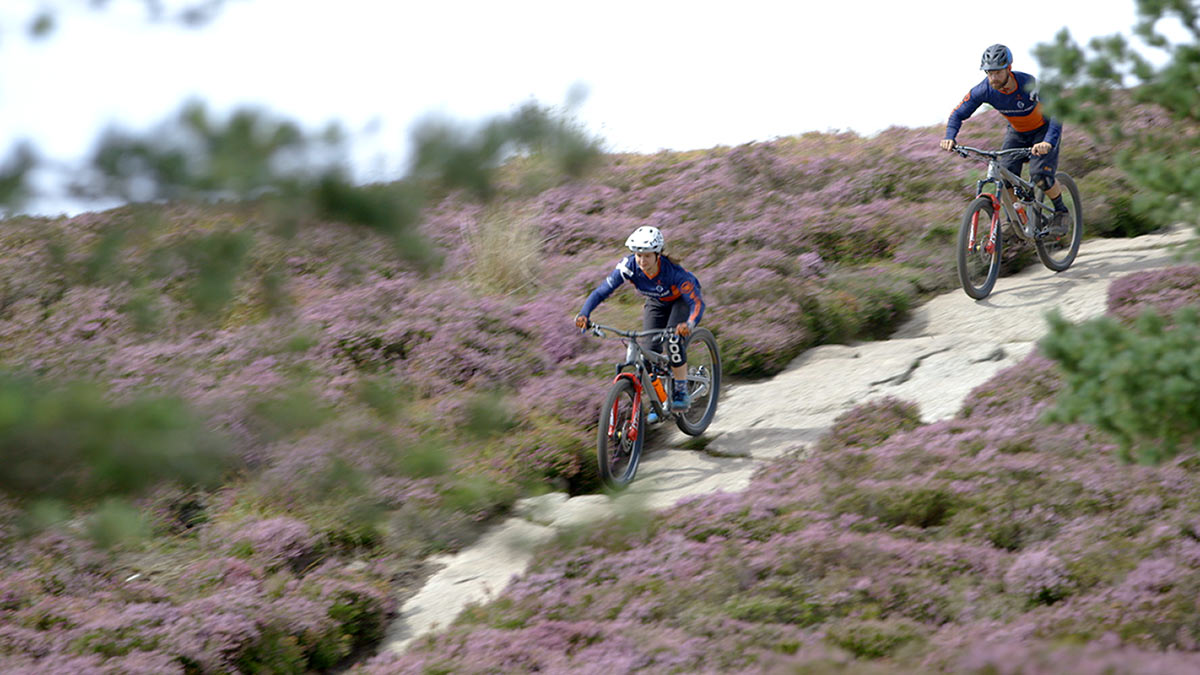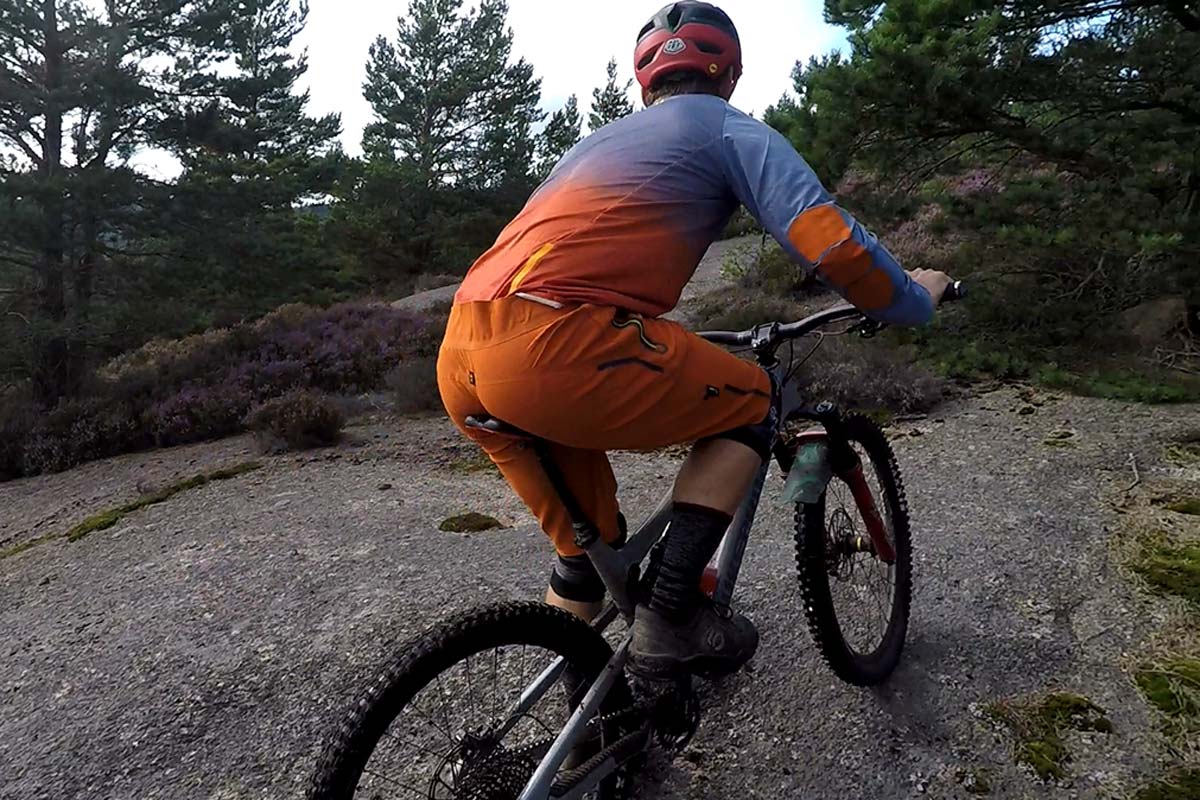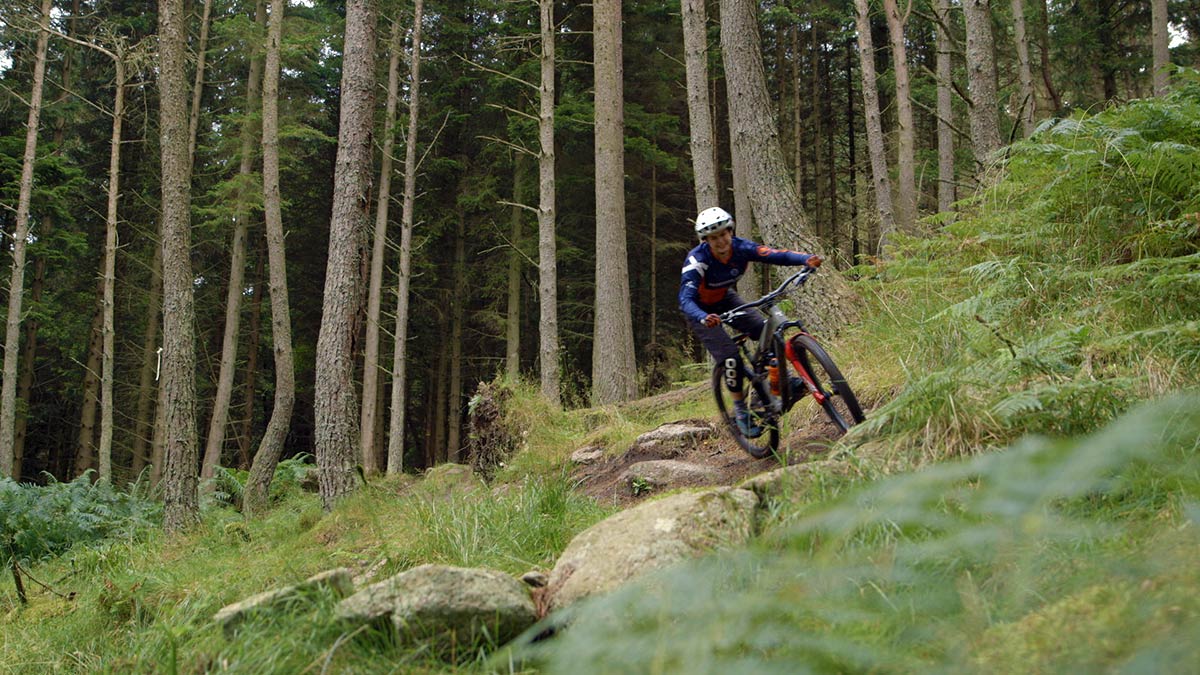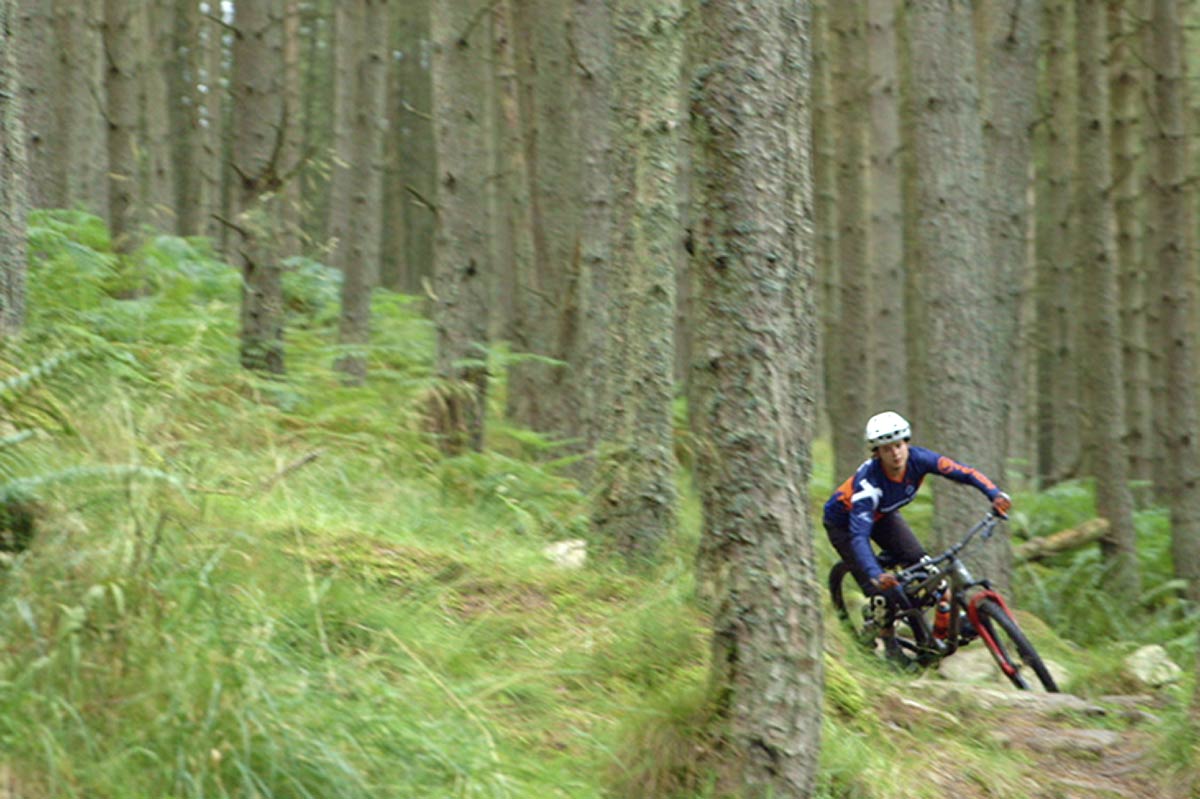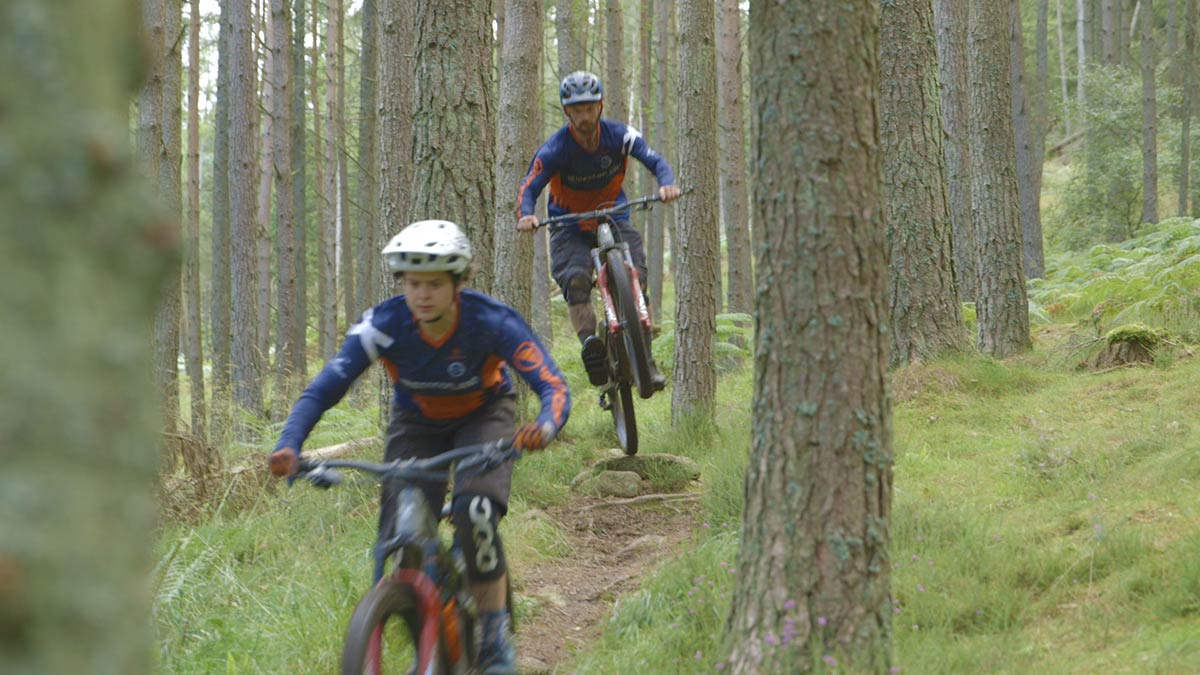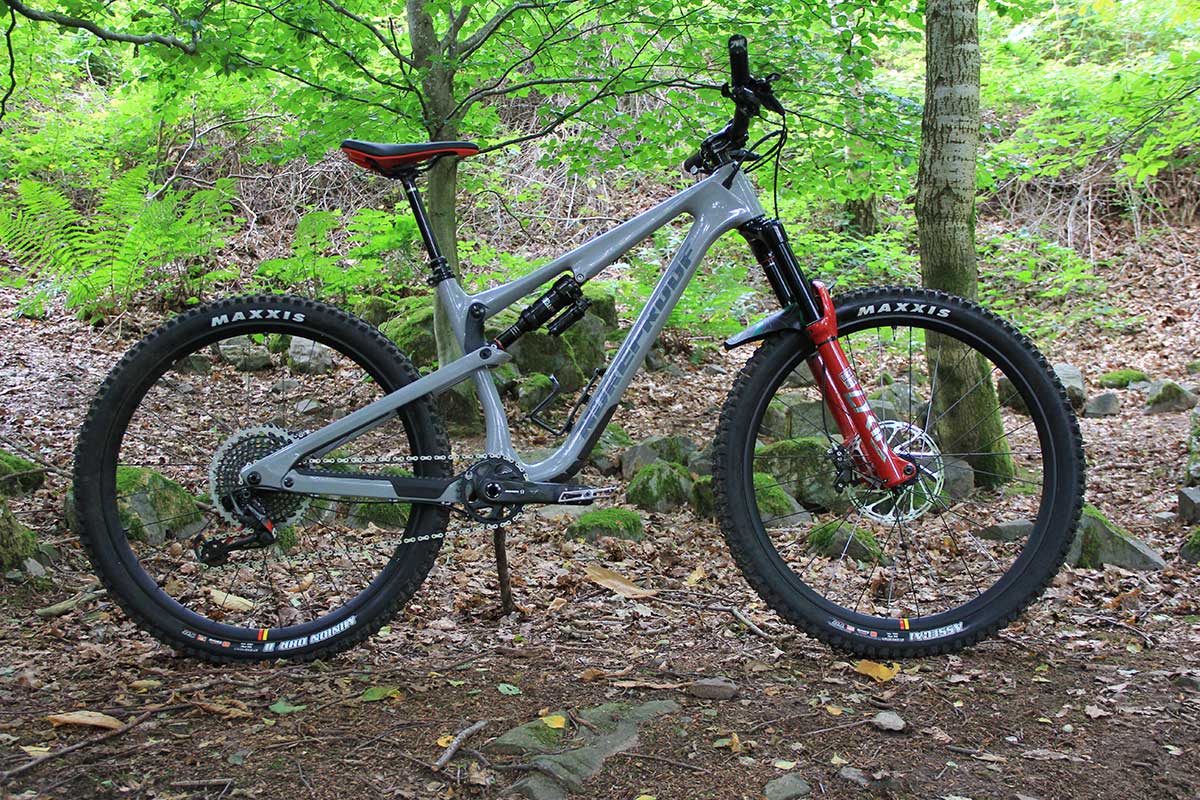Slotting into Nukeproof’s mountain bike lineup between the Scout trail bike and the Mega enduro bike as a brand new all-mountain addition is the Nukeproof Reactor, a 140-160mm travel full suspension mountain bike available with both 27.5″ and 29″ wheels. It bears no resemblance whatsoever to the original 1997 Nukeproof Reactor; the hardtail with linkage suspension fork is now considered a vintage classic. As part of Bikerumor’s Where to Ride Series, we had the pleasure of sampling the granite rock descents of Scotland’s Aberdeenshire aboard the top end model, the Reactor 275c RS.

Nukeproof Reactor 275c RS All Mountain Bike
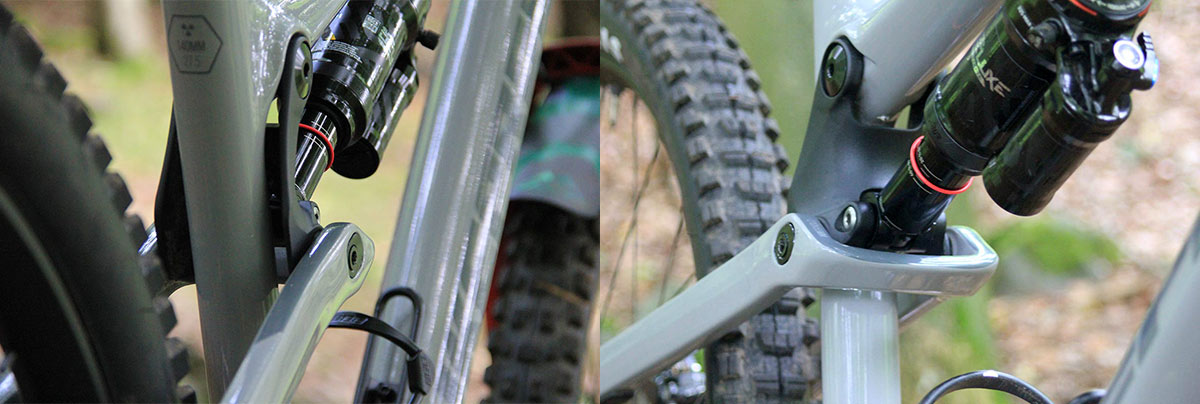 The 27.5″ Nukeproof Reactor sits on 140mm of rear wheel travel serviced by a swing link driven 4-bar horst link layout. The top end build, designed as Nukeproof’s race team would spec it, is slightly over-forked with 160mm of travel offered by the Rockshox Lyrik Ultimate. Click here for the full tech breakdown.
The 27.5″ Nukeproof Reactor sits on 140mm of rear wheel travel serviced by a swing link driven 4-bar horst link layout. The top end build, designed as Nukeproof’s race team would spec it, is slightly over-forked with 160mm of travel offered by the Rockshox Lyrik Ultimate. Click here for the full tech breakdown.
First Ride Impressions
For four consecutive days the Nukeproof Reactor 275c RS was our two-wheeled companion, on big mountain rowdy granite rock descents, fresh cut loamy trails, enduro race tracks, gruelling hike-a-bike climbs, and even on a mini bike rafting adventure. The full travel story is coming soon on Bikerumor, and our YouTube channel. For now, check out the Bike Check video to see the Reactor in action on Aberdeenshire’s granite rock enduro trails at Pitfichie.
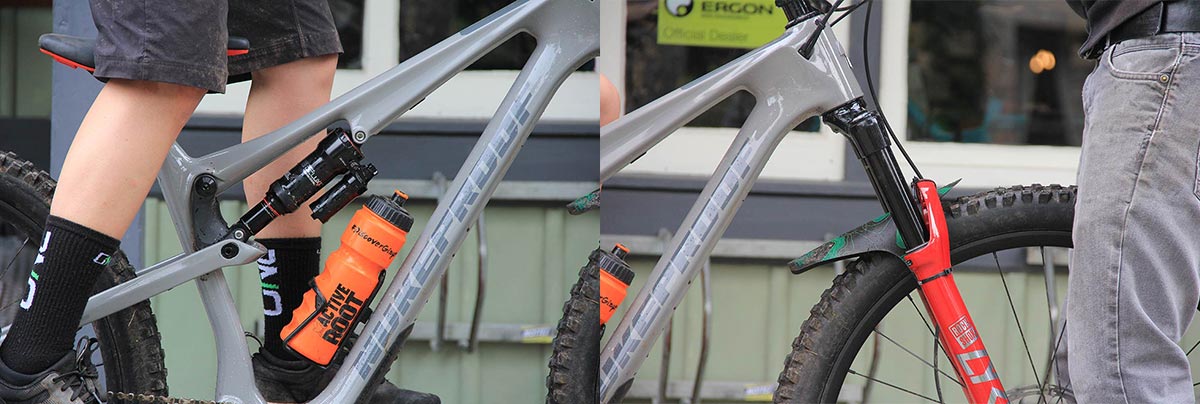
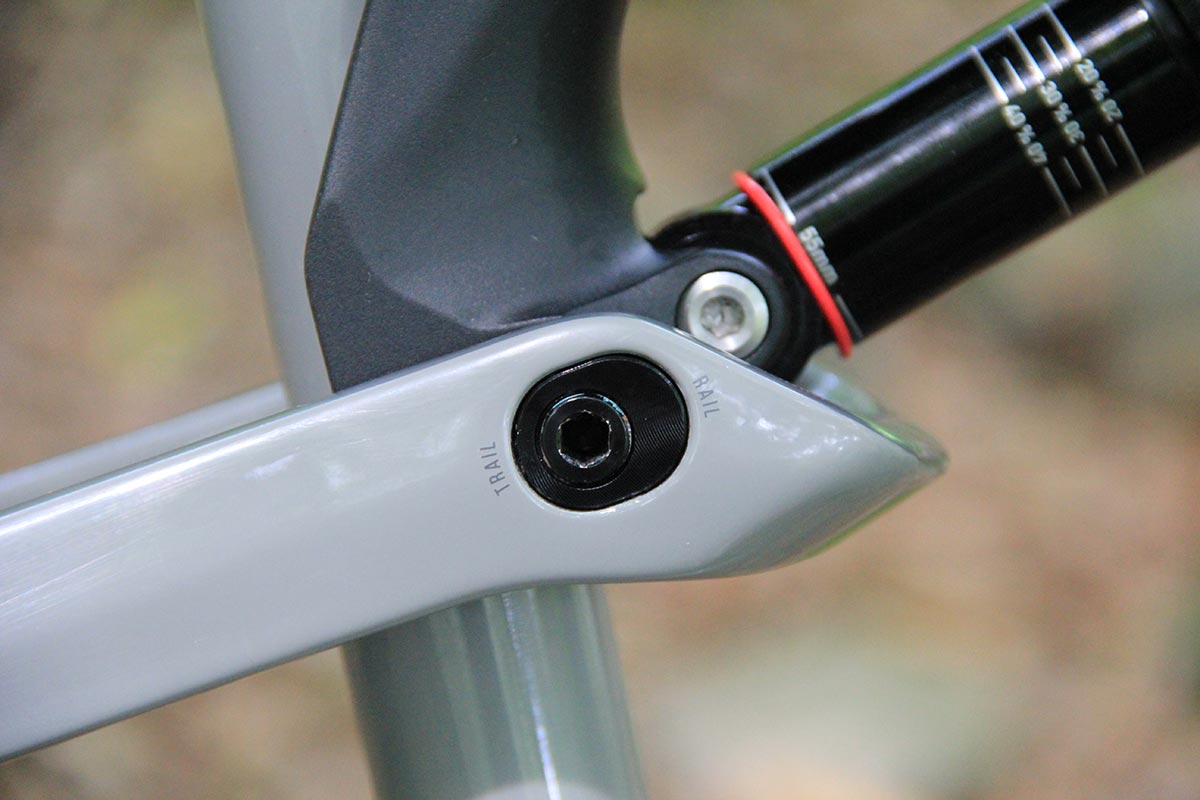
Firstly, it is worth mentioning that the geometry of the Nukeproof Reactor can be altered through the use of a flip-chip. A 2-minute job with a hex key will see you transform the bike geo from TRAIL mode, only really recommended for climbing, to RAIL mode, where the bottom bracket drops by around 6 mm and the head angle slacken off half a degree. As I say, it can be done in 2 minutes, but this job shouldn’t be done hastily as you could quite easily cross thread the bolt.
Ascending in TRAIL mode
Pedalling the Nukeproof Reactor in TRAIL mode, I personally felt that the 75.1 degree effective seat tube angle provided a comfortable upright seated position for climbing, while my fellow tester Rob felt a slightly steeper seat angle would have improved the pedaling comfort and efficiency greatly. To correct for this, Rob shifted the saddle forward on the rails and pedaled the very steep inclines on the button of the saddle. The anti-squat characteristics of the frame have been optimised for the climbing gears, at 92% in the 50T cassette ring. Right enough, when climbing in both TRAIL mode and RAIL mode with the shock in pedal mode, the bike’s suspension platform was solid with not a hint of pedal bob in sight. With the shock fully open the pedal bob was noticeable but didn’t detract greatly from the good climbing feel.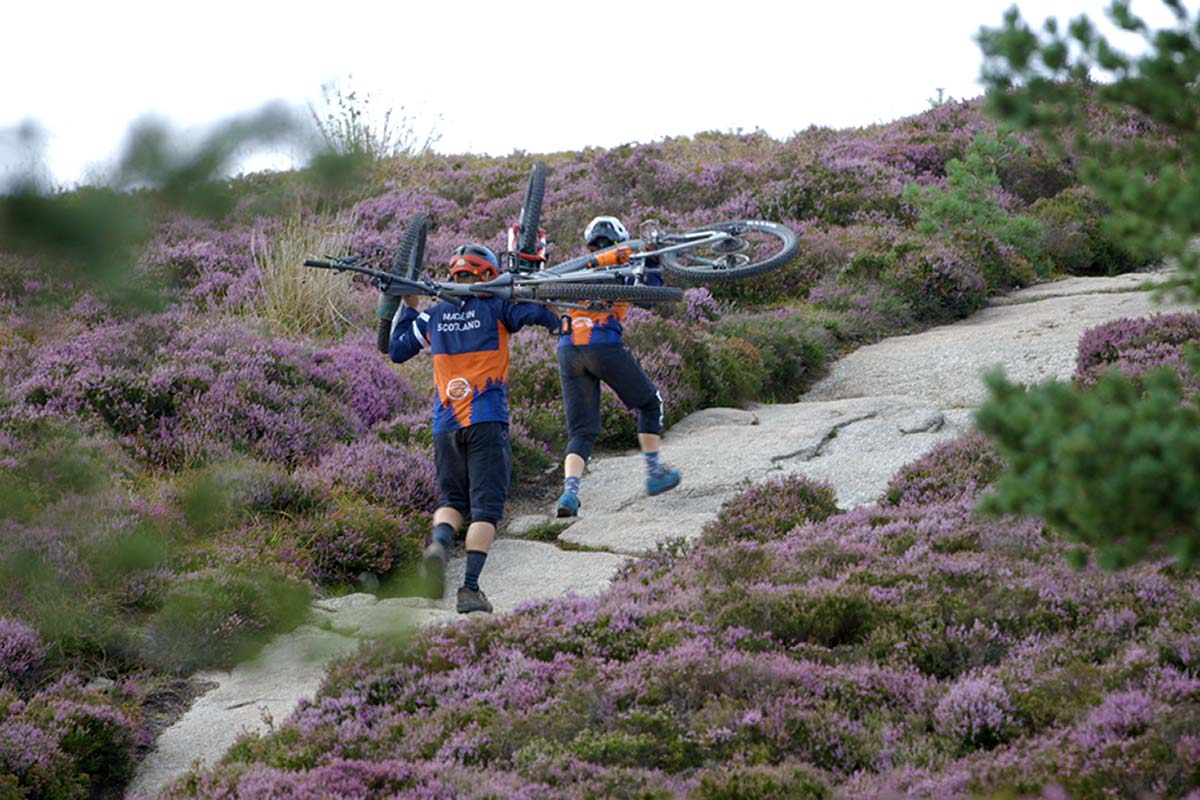
The Reactor has a relatively low BB height of 339 mm in TRAIL mode meaning your pedaling game really has to be on point on the technical climbs to avoid whacking the bottom of the frame off rocks or experiencing pedal strikes. We very much appreciated the lightweight carbon RS build, especially on those long hike-a-bike ascents.
Descending in RAIL mode
Though the Reactor and the Mega don’t look massively different to one another, the Reactor’s suspension platform has been designed to provide a less regressive feel at the beginning of the stroke to improve small bump sensitivity, and to give the rear end a more progressive feel overall. The small bump sensitivity was good and the bike felt fairly composed at speed over relatively smooth terrain.
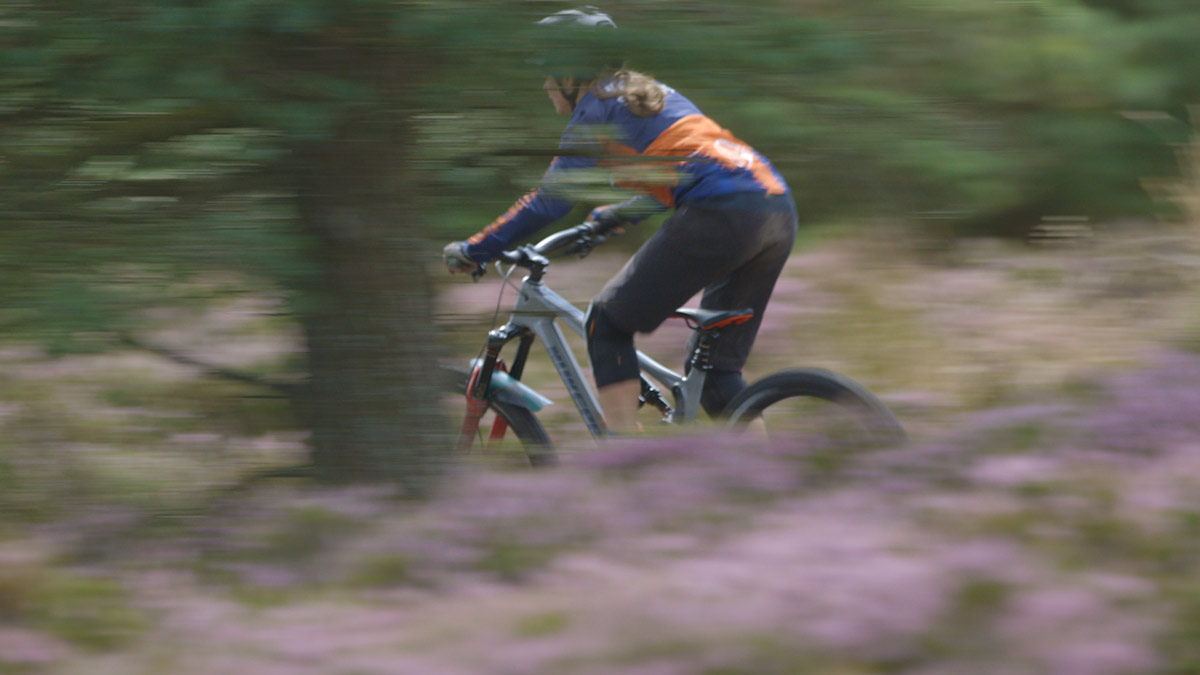
We haven’t ridden the Mega so can’t make a direct comparison here but we did feel as though the mid-stroke support on the Reactor could be improved greatly by a heavier damper tune on the Rockshox Deluxe Ultimate shock. The sag was set to 30% front and back, as recommended. However, our tester Rob who is a particularly aggressive (and talented) rider felt that with the solid support of the Lyrik Ultimate in the front, and the relatively reduced support in the rear, the bike had a tendency to understeer when hitting rutted turns at pace.
Rob tested the descending capabilities of the bike in both TRAIL and RAIL mode, finding that RAIL mode provided lots more support, and with it, more confidence at speed. He fitted 3 volume reducers into the shock to get the supportive ride feel he needed. It is worth noting that you can insert a Gnar Dog volume reducer into this shock – equivalent to 2.5 normal volume spacers, and you can then fit an additional two normal spacers in on top of it to make the shock a lot harder deeper into the travel. Personally, being a lighter and much less aggressive rider than Rob, I felt the rear end was supportive enough with just one standard volume spacer fitted in the shock.
The Reactor proved to be at its most capable and agile in the tight and twisty terrain offered by the wooded sections of trail at Pitfichie. The wheelbase of the Reactor is pretty middle of the range for a 140mm travel 27.5″ bike at 1185 mm. This combined with the lightweight build made throwing the bike into turns feel effortless.
Nukeproof Reactor – The Bottom Line
The Nukeproof Reactor isn’t the burliest of bikes out there, nor is it meant to be. It definitely fits into that “all-mountain” niche very nicely as a more than capable and fun to ride trail bike that will also carry you down some rowdy technical descents with reasonable dignity when called upon. It can feel a little unsettled at full pelt on challenging rocky terrain, something a heavier shock tune might improve, but definitely comes alive on tight technical tracks in the woods when maneuverability is more important than outright speed. The lightweight build of the Reactor 275c RS makes this bike a good companion for big mountain days, especially as the geometry can be so easily changed with the flip-chip. With the Reactor you’ll not have to empty yourself on the climbs, and you can switch to RAIL mode to make the most of your hard earned descents.
Nukeproof Reactor – Test Mule Spec
We rode the 275c RS model, the “hardcore” build of the Reactor. All models save for the 275c RS come with a 150mm fork, while the 275c RS is 160mm up front serviced by a RS Lyrik Ultimate fork which we absolutely loved – buttery smooth, supportive progressive feel and confidence inspiring. We also loved the SRAM Code RSC 4-pot brakes that this model is kitted out with – very reliable stopping power with good modulation. As mentioned above, the RockShox Deluxe Ultimate shock could probably improve the bike’s ride feel with a heavier damper tune but the simple insertion of a volume spacer or two gave the suspension platform a more progressive feel. On our big mountain day in the Cairngorm National park we very much appreciated the ability to effortlessly spin away up the climbs with the 12 speed Eagle X01 drivetrain. Worth mentioning is the new for 2020 Maxxis Assegai tyre, Greg Minnaar’s signature tyre, previously only available in the thick double-ply casing DH version. The Nukeproof Reactor 275c RS is fitted with the lighter EXO+ version which offers an unfathomable amount of grip at the front end. The Assegai and a Minion DHR II are fitted to a burly DH spec Mavic Deemax wheelset.
